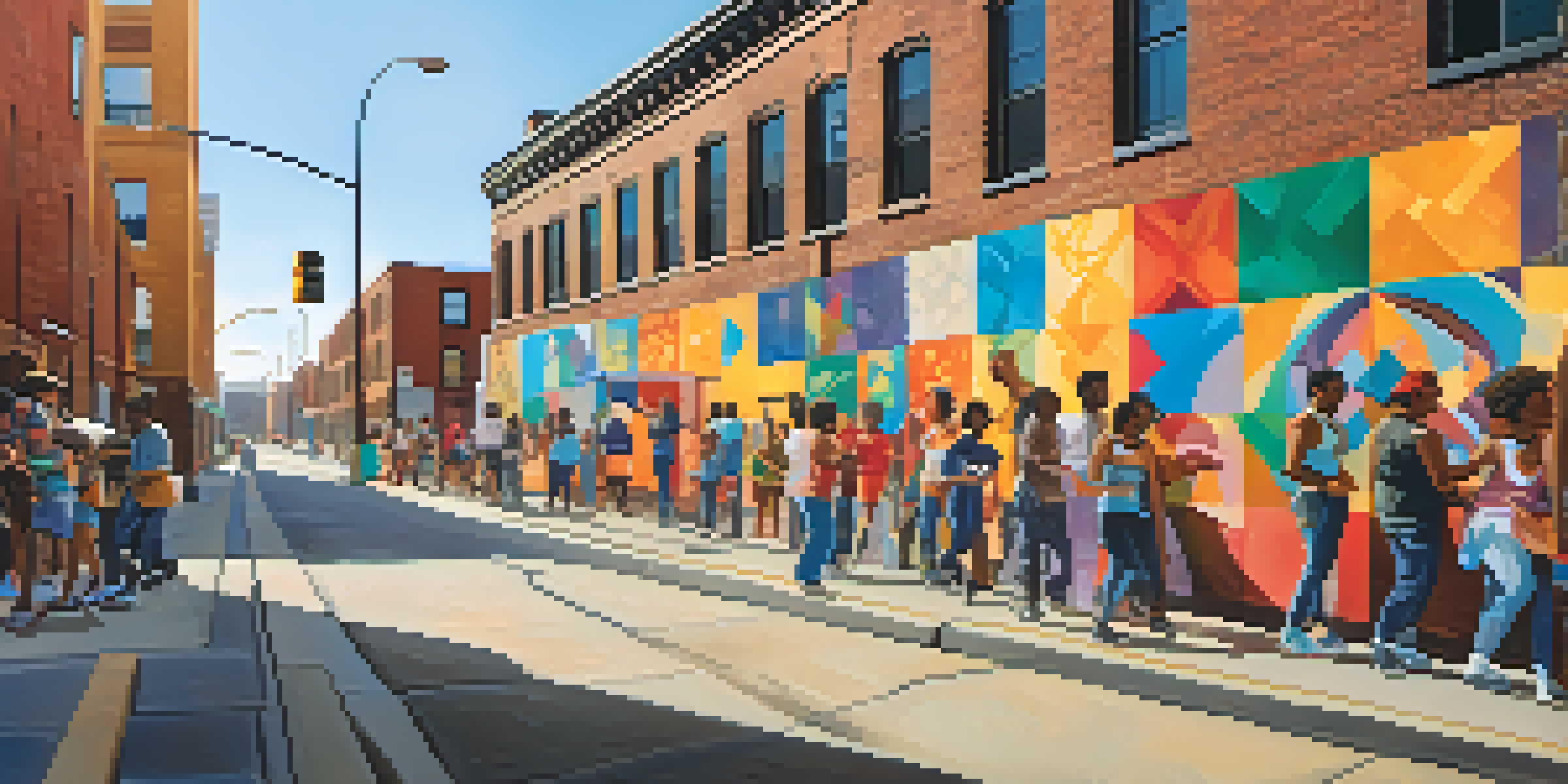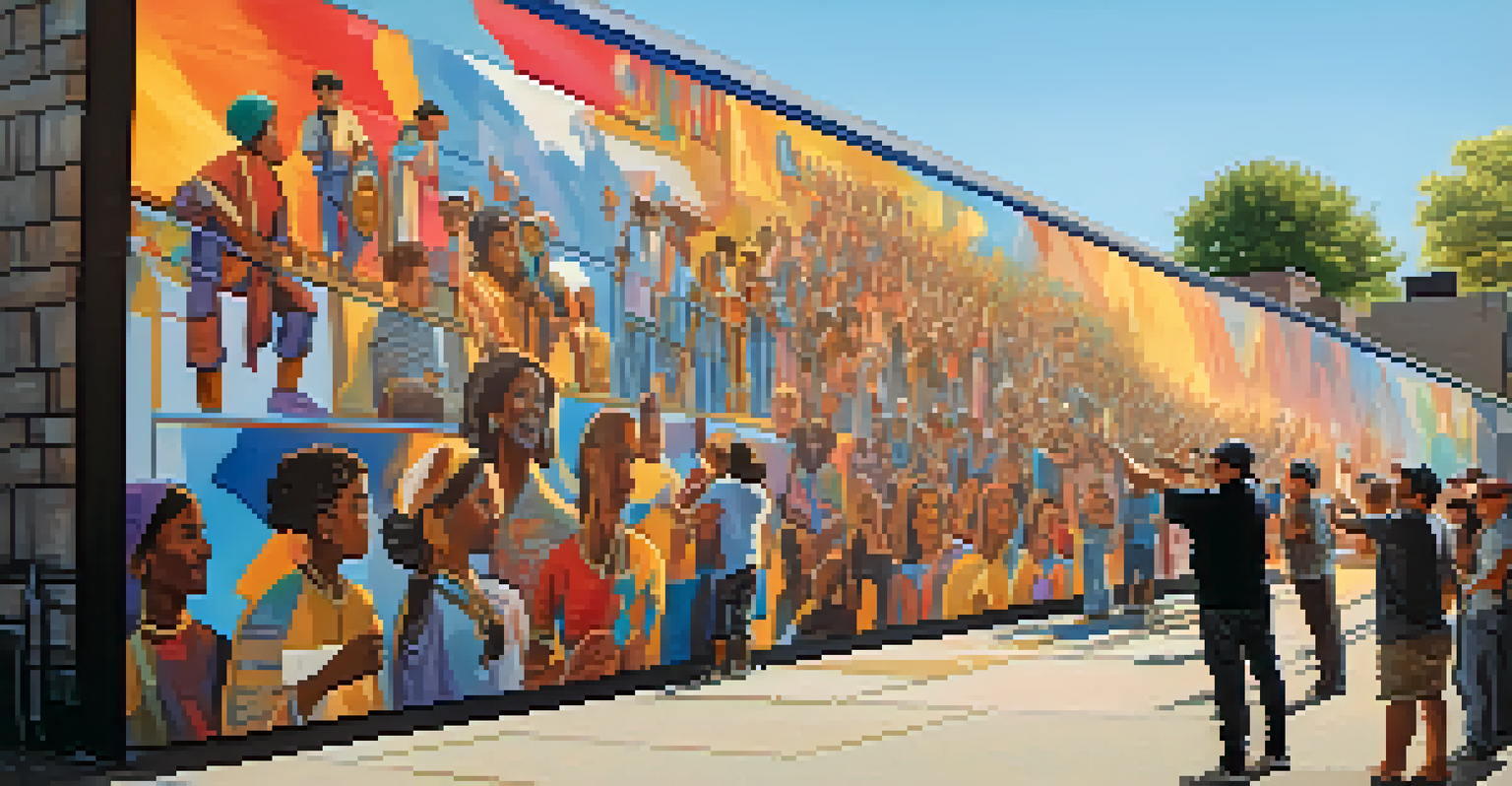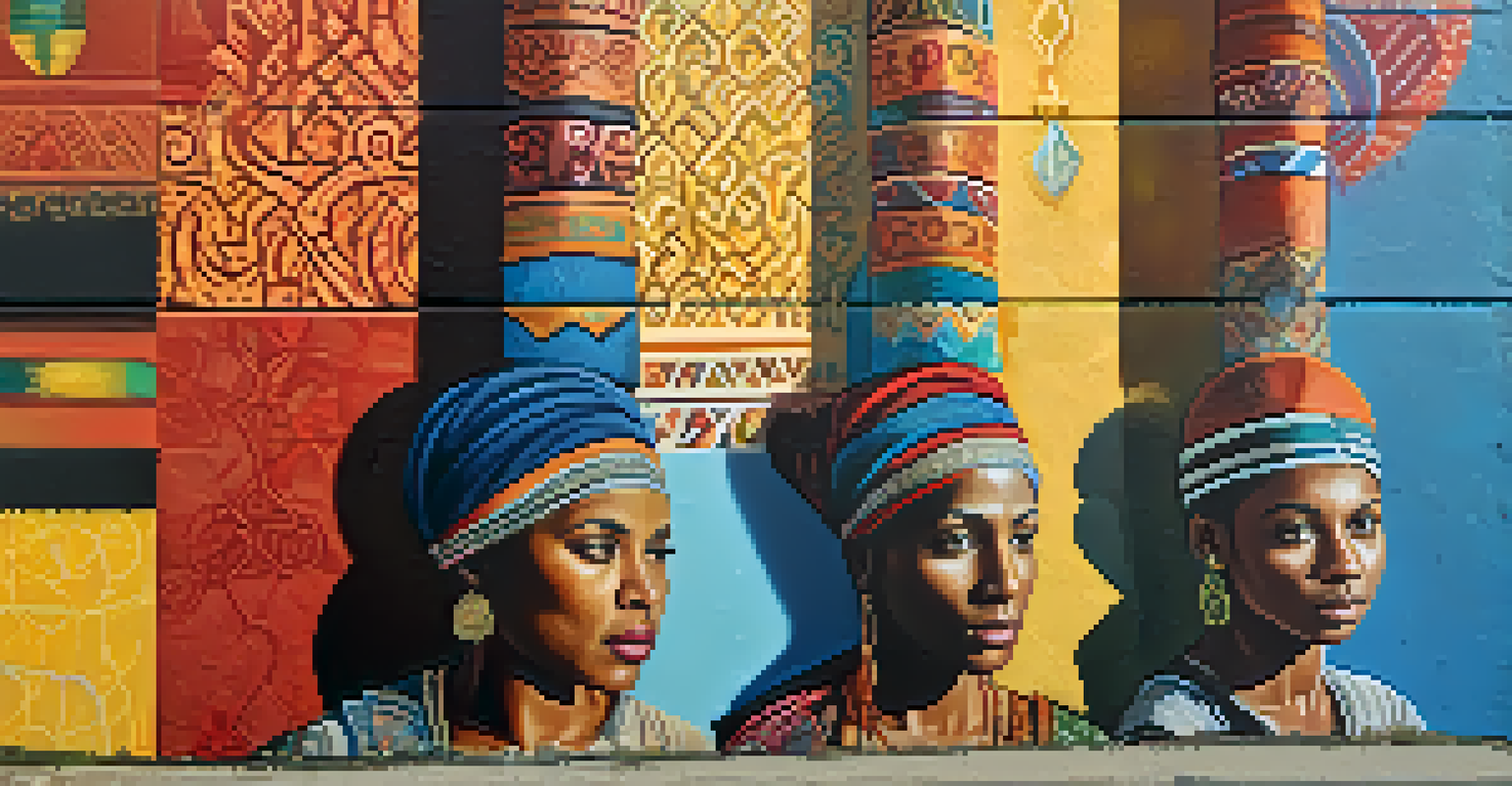The Role of Community in Street Art and Graffiti Culture

Understanding the Essence of Street Art and Graffiti
Street art and graffiti are more than just colorful expressions on walls; they reflect the community's identity and voice. These art forms often serve as a canvas for social commentary, addressing issues like inequality, politics, and community pride. By using public spaces, artists engage with a broader audience, fostering conversations that might not happen in traditional galleries.
Art is not a mirror held up to reality, but a hammer with which to shape it.
For many, these artworks can spark a sense of belonging or even provoke thought about local issues. They can elevate forgotten spaces, transforming dull urban landscapes into vibrant showcases of creativity. Thus, street art and graffiti become integral to the cultural fabric of the community, illustrating shared experiences and collective stories.
Moreover, the ephemeral nature of street art adds to its allure. Unlike traditional art that can be preserved, these works might be painted over or washed away, creating a sense of urgency to appreciate them while they last. This transient quality invites communities to engage with their surroundings and encourages artists to continually evolve.
The Role of Community Engagement in Street Art
Community engagement is a critical element in the creation and appreciation of street art. Artists often collaborate with local residents to ensure their work resonates and honors the community's history. This connection can lead to murals that tell stories of the neighborhood, bridging generations and cultures.

Events like community paint days or mural festivals can foster collaboration and pride, allowing everyone to participate in the creative process. This involvement not only beautifies the area but also strengthens community bonds. When residents see their own contributions reflected in the art, it cultivates a sense of ownership and responsibility toward their environment.
Street Art Reflects Community Identity
Street art serves as a vibrant canvas for social commentary, showcasing the unique cultural identity and shared experiences of the community.
Furthermore, community projects can bring attention to local issues, encouraging dialogue and action. Artists can use their platforms to highlight problems like homelessness or environmental degradation, using their work as a catalyst for change. This interplay between art and activism makes street art a powerful tool for community empowerment.
Street Art as a Reflection of Cultural Identity
Street art is a mirror reflecting the cultural identity of its community. Artists often draw inspiration from local traditions, languages, and experiences, creating pieces that resonate deeply with residents. This cultural representation fosters pride and helps preserve the unique heritage of a community amid globalization.
Street art is a form of activism that has the power to influence, educate, and inspire.
For instance, murals depicting historical figures or events can educate newcomers about the area's past, creating a deeper connection to the place. In this way, street art acts as both a celebration of culture and a reminder of the struggles and triumphs that shaped it. The visual nature of these artworks makes them accessible to all, regardless of language or background.
As communities evolve, so does their street art, reflecting current trends, styles, and social issues. This dynamic nature ensures that the art remains relevant and continues to be a voice for the community, capturing the essence of the moment while honoring its roots.
Challenges Faced by Street Artists in Communities
While street art can be a powerful form of expression, it is not without its challenges. Many artists face legal issues, as graffiti can be considered vandalism in many jurisdictions. This can deter artists from creating, especially if they fear being fined or arrested.
Additionally, community acceptance can vary; some residents may see street art as a nuisance rather than a cultural asset. This divide can lead to conflicts over space and aesthetics, with some advocating for more traditional forms of public art. Finding a balance that respects both perspectives is crucial for fostering a harmonious relationship between artists and the community.
Community Engagement Enhances Art
Collaboration between artists and local residents fosters a sense of ownership and pride while beautifying neighborhoods through creative projects.
Despite these challenges, many cities are beginning to recognize the value of street art, implementing programs that support artists legally. This shift in perspective can create opportunities for artists to contribute positively to their communities while also enhancing public spaces.
The Influence of Social Media on Street Art Communities
In today's digital age, social media plays a significant role in shaping street art communities. Platforms like Instagram and TikTok allow artists to share their work with a global audience, gaining recognition beyond their local context. This exposure can create opportunities for collaboration and inspire new ideas.
Moreover, social media can serve as a powerful tool for mobilizing community support. Artists can use these platforms to promote events, solicit feedback, and engage with followers, fostering a sense of connection and collaboration. This interaction can help build a dedicated following, ensuring that community members feel invested in the art being created.
However, the rapid spread of information can also lead to issues such as appropriation or misinterpretation of the art's message. Artists need to navigate this landscape carefully, balancing the benefits of exposure with the potential downsides. Ultimately, social media can enhance community dynamics, but it's essential to remain mindful of its complexities.
The Intersection of Street Art and Activism
Street art has long been intertwined with activism, serving as a platform for political and social commentary. Many artists use their work to address pressing issues, from climate change to racial justice, capturing the attention of passersby and sparking important conversations. This blend of art and activism can amplify voices that are often marginalized in mainstream discourse.
For instance, during protests, you might see murals or graffiti that highlight the cause, serving as a visual rallying cry. These artworks can inspire solidarity and motivate community members to take action, ultimately fostering a sense of unity. Artists become catalysts for change, using their creativity to inspire others to engage with social issues.
Art as a Tool for Activism
Street art blends creativity with activism, addressing pressing social issues and inspiring community dialogue and action.
The ephemeral nature of street art means that these messages can be fleeting, yet their impact can be lasting. They often provoke thought long after the paint has dried, encouraging communities to reflect on the issues at hand. In this way, street art becomes a powerful medium for community-driven activism.
Celebrating Diversity through Street Art
One of the most beautiful aspects of street art is its ability to celebrate diversity. Artists from various backgrounds bring their unique perspectives and experiences into their work, enriching the cultural tapestry of the community. This vibrant mix of styles and messages fosters a sense of inclusivity and representation.
Murals can depict diverse narratives, reflecting the stories of various ethnicities, genders, and lifestyles. These artworks not only honor individual experiences but also promote understanding and empathy among community members. When people see their identities represented in public art, it can create a sense of belonging and validation.

Moreover, diversity in street art can challenge stereotypes and break down barriers. By showcasing a wide range of voices, these artworks can spark conversations about identity and acceptance, ultimately leading to a more cohesive community. Street art becomes a platform for dialogue, allowing people to explore their differences and find common ground.